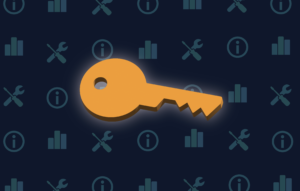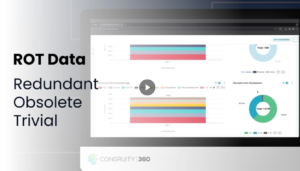In recent years, there have been many technology innovations that have facilitated the shift from on-premise data storage to cloud data storage, such as creating hybrid solutions or implementing machine learning. Over 50% of an organization’s data is dark, which comes with a great deal of unnecessary and risky costs, such as storage and overhead, maintenance, and time costs. Dark data is the information assets organizations collect, process and store during regular activities, but the data generally is never used for other purposes like analytics. Classifying dark data comes with unprecedented benefits that will save organizations money and drive their product innovation and business strategies. In 2019, Gartner analysts believe that a hybrid storage approach will be the norm for IT departments. With data privacy regulation laws rising around the world and the growth of real-time data and forward-looking predictive analytics, it’s essential that companies act fast to classify and clean up their data.
Looking to move past hybrid cloud skepticism within your organization? Here are some best practices to ensure your data is being used to its greatest potential within a safe, controlled environment.
1. Discovery and Analysis
Many data management classification tools come along with data discovery. Businesses have valuable insights within their data that they don’t know exist. Implementing tools that can help you dig deep into your data and allows you to take action on your data will help get this started.
2. Classification and Organization
Failure to remain compliant with data and privacy laws leads to hefty fines and penalties. Organizing data is key to applying data regulation policies to data. This can be done by organizing data by its level of sensitivity or data type.
3. Cataloging and Management
Once all of your data is organized and classified, it is critical to document your findings. This allows people within the company and its consumers to have access to your organizations data and helps to better understand the format of data whether that means unstructured, semi-structured, or structured data.
4. Data Quality Management
It is important to get a feel for both your organization’s and consumers’ data needs so you can meet and exceed all agreed upon expectations. There are many management processes that can be implemented to meet data expectations including—control creation, quality monitoring and reporting, supporting processes, and data incident tracking. Incorporating proper data quality management techniques are crucial in ensuring that your organization has reliable data. Without the right management, unused data can quickly become a burden on an organization.
5. Access Management
Allowing customers to have access to their data is important for an organization to keep in mind. However, it is equally as important to incorporate proper prevention of access to data for those who are unauthorized. Establishing levels of managed access to data is a technique to prevent issues from happening in the future relating to access.
6. Auditing
Auditing and monitoring are key to preventing threats and risks in the future. It is important to audit regularly so that future problems can be acted upon before they occur.
7. Data Protection
Incorporating as many security measures as possible is key to keeping the upmost safety for your organizations data. You never know how quickly you can be hacked, and it can be detrimental to the company.
All of the tips can help your organization improve its data governance strategy especially in terms of migrating to the cloud. Check out our data governance tools and book an intro call with a member of Congruity360, today!








